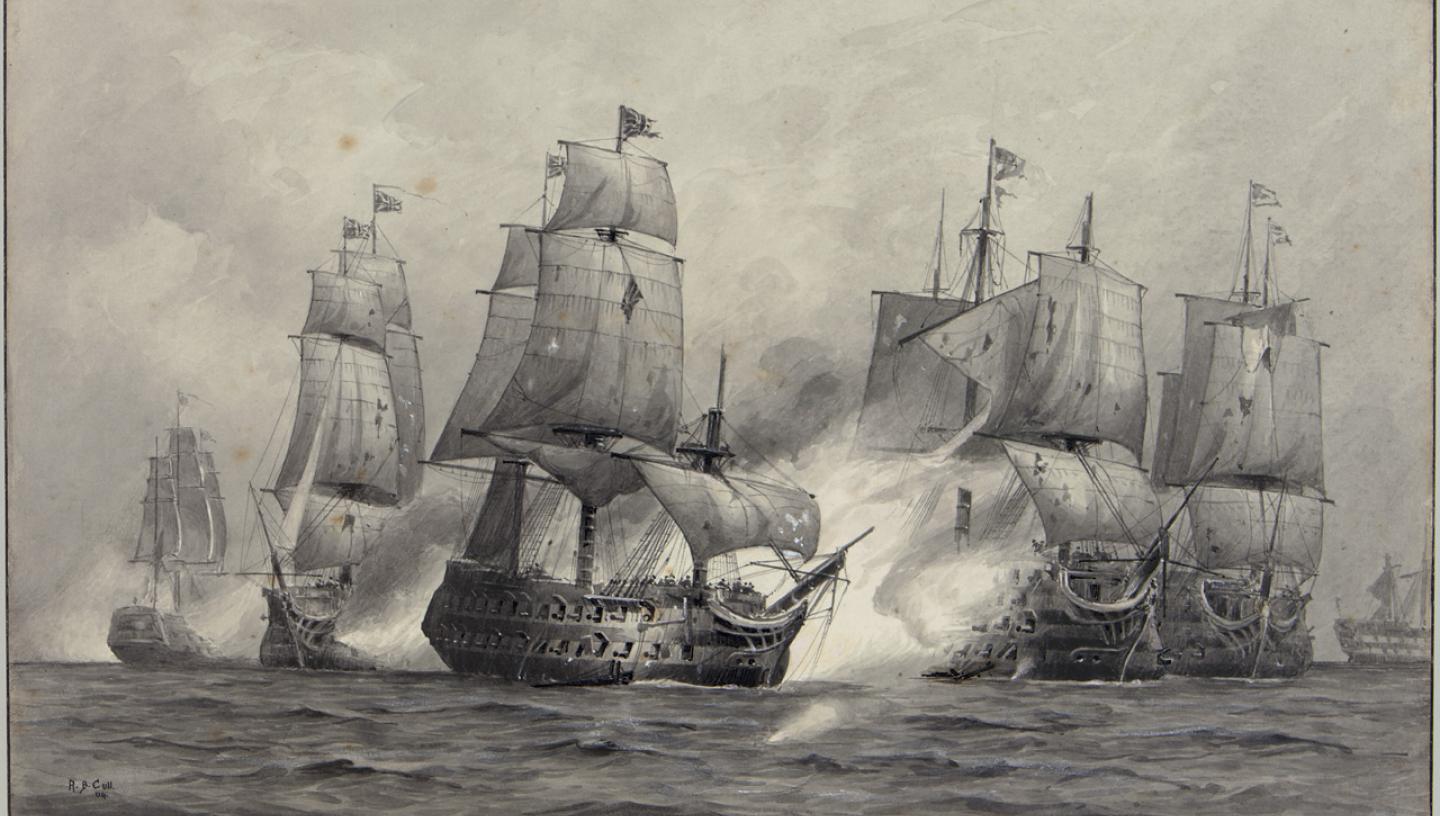
Spanish warships
The San José and the Santissima Trinidad were 18th century Spanish warships. Both ships were involved in sea battles involving Nelson.
San José
The San José was a three-decked Spanish first-rate warship, with 120 guns. She formed part of the Spanish fleet that fought the British fleet off the coast of Tenerife at the Battle of Cape St Vincent in 1797.
At the height of the action, the San José was rammed by her next astern, the eighty-gun San Nicolas and the two ships became locked together. It was at this point that Nelson made his famous move, breaking with his orders and leading a boarding party onto the San Nicolas. The crew of San José tried to help their comrades by firing on Nelson's men, only to find themselves under attack. They surrendered to Nelson soon after.
San José went on to enjoy a long active service in the Royal Navy as HMS San Josef – the only foreign first-rate battleship ever to do so. Her first service was as Nelson's flagship in the English Channel in January 1801.
Santissima Trinidad
The most famous Spanish warship of her day, the Santissima Trinidad played a central role in two of Nelson's battles. With her four gun decks mounting a total of 136 guns, she was reputed to be the largest ship in the world. In fact she was actually smaller than the French three-deckers launched just before the war.
Trinidad was a ‘trophy’ ship and the British made very determined attempts to capture her. At the Battle of Cape St Vincent, in 1797, she came under attack from at least five British battleships including briefly, Commodore Nelson in HMS Captain.
After a heroic defense in which she was totally dismasted and suffered over 300 casualties, she surrendered. But before the British could take her, the commander-in-chief Admiral Sir John Jervis was forced by the arrival of fresh Spanish ships to break off the action.
The Trinidad's crew managed to rig jury masts and bring their battered ship safely into Cádiz harbour, despite an attempt to recapture her by the British frigate HMS Terpischore under Captain Richard Bowen.
Eight years later, Trinidad was less fortunate. At the Battle of Trafalgar, 21 October 1805, flying the flag of Rear-Admiral Don Baltazar de Cisneros, she was once again set upon by British ships and eventually surrendered to HMS Neptune.
HMS Prince took her in tow, but she was so badly damaged that she sank in the great storm that followed the battle.
Discover more about Nelson
Find out more about Nelson's life and legacy at the National Maritime Museum's 'Nelson, Navy, Nation' gallery. Entry to the National Maritime Museum is free, open daily from 10am.